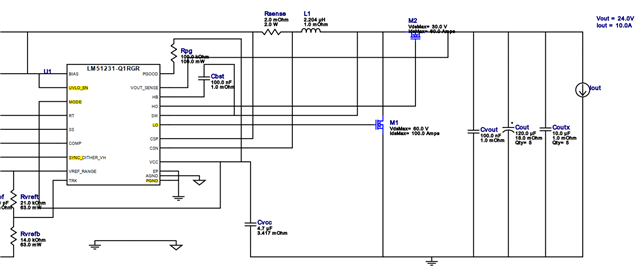Tool/software:
Dear Team,
I am designing a 12 to 24V 240W boost converter using the QRGRRQ1 IC. I obtained the attached design from the webench designer tool. However, upon reviewing the EVM, I noticed that they are using a total of 4 MOSFETs, which I believe is for power distribution. Can you please advise me on whether I should proceed with the single MOSFET design or if using 2 parallel MOSFETs would be more advisable? I also have space constraints to consider.


